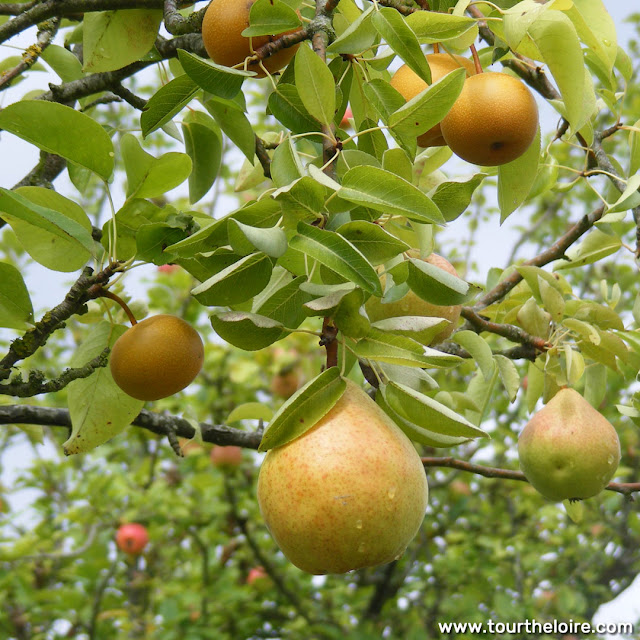In the second half of the 19th century a brilliant French horticulturist called Charles Baltet developed dozens of new pear varieties that became known as poires bourgeoises. It is such a curious term that I wondered where it had come from. It was clearly a sort of joke or a cultural reference but what was the background?
It turns out that Louis-Philippe, the last King of the French, who reigned from 1830 to 1848, was rather rudely known as 'le roi-poire', because of his supposed resemblance to the fruit. Charles Baltet's pears must have been considered to be particularly reminiscent of the former King.
So how on Earth did France end up with a piriform King?!
Louis-Philippe, from the Orléanist line of the French royal family, came to power as a result of the July Revolution. Initially popular, but as time went on his conservative policies lost popularity and there was an industrial and agricultural recession. He was careful not to appear ostentatious, and became known as the bourgeois monarch. The bourgeois class of industrialists and bankers supported him and during his reign the gap between rich and poor widened.
The press had been liberalised in 1830 and his enemies took full advantage. Criticism and mockery of the sovereign were the burgeoning satirical magazines bread and butter. After only a year or two of this treatment the King took one of the leading cartoonists to court. The cartoonist responded by drawing him as a pear. And a meme had started.
Prior to this the pear had a simple perjorative meaning, used to indicate someone was an idiot, as well as some sexual associations. But after the cartoons appeared people understood the symbolism of the shape of the pear to indicate the bulging base with the narrow top represents the middle class, now the dominant social class. And of course, the literal figure and form of the King.
It wasn't just drawings of pears that proliferated. Puns abounded too, with lots of jokes about the Revolution bearing fruit and so on. Finally an attempt to assassinate Louis-Philippe led an increasingly desperate government to re-introduce censorship laws in 1835 which meant cartoons had get pre-publication approval.
After a valiant campaign aimed at keeping the King and the rich on their toes in the new democracy, the pear finally ran its course, but remained in the cultural memory to be recalled with Baltet's new varieties. Baltet's pears were luscious and sweet, big and bulging, ripe for a bit of social commentary again.





No comments:
Post a Comment